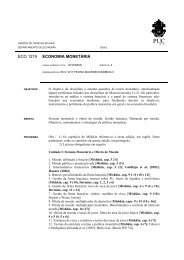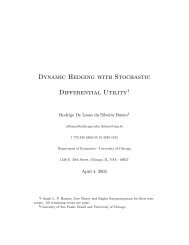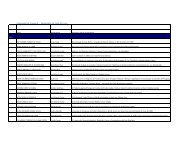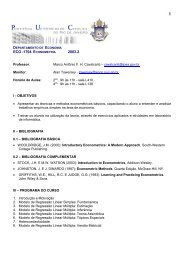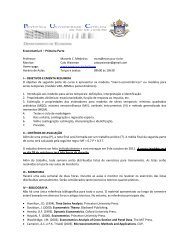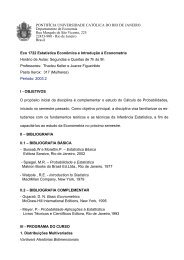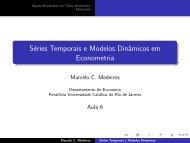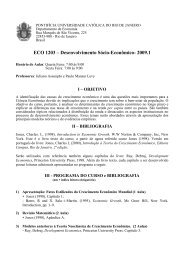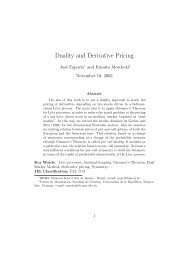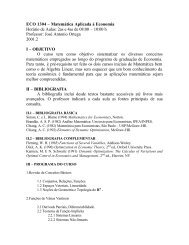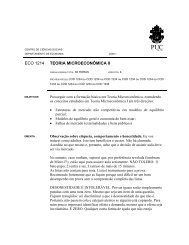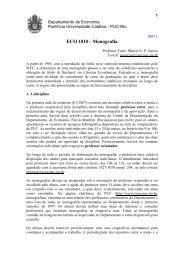Smooth Transitions, Neural Networks, and Linear Models - CiteSeerX
Smooth Transitions, Neural Networks, and Linear Models - CiteSeerX
Smooth Transitions, Neural Networks, and Linear Models - CiteSeerX
Create successful ePaper yourself
Turn your PDF publications into a flip-book with our unique Google optimized e-Paper software.
An appropriate null hypothesis isH ¼ ·½ ¼ (11)Note that (10) is only identified under the alternative. Using a third order expansion <strong>and</strong> after rearrangingterms, the resulting model isÝ Ø ¼ Þ Ø ····ÕÕ½ Ô ÕÕ½½ ½ Ô ÕÕ ¼ Þ Ø ´ ´ ¼ Ü Ø µµ Ü Ø Ü Ø ·ÕÕÔ ÕÕ½ ½¬ Þ £ ØÜ Ø Ü Ø ·Õ½ ½ Ь Þ £ ØÜ Ø ·Õ ÕÕ½ Ь Ð Þ £ ØÜ Ø Ü Ø Ü ÐØ · £ Ø Õ ÕÕ½ Õ Ü Ø Ü Ø Ü Ø Ð Ü Ø Ü Ø Ü Ø Ü ÐØ(12)The null hypothesis is defined as H ¼ ¼¬ ¼ ¼. Again, st<strong>and</strong>ard asymptoticinference is available.2.2.2 Parameter EstimationAfter specifying the model, the parameters should be estimated by nonlinear least squares (NLS). Hencethe parameter vector © of (4) is estimated as© argmin© É Ì ´©µ argmin©Ìؽ´Ý Ø ´Þ Ø Ü Ø ©µµ ¾ (13)Under some regularity conditions the estimates are consistent <strong>and</strong> asymptotically normal (Davidson <strong>and</strong>MacKinnon 1993).The estimation procedure is carried together with the test for the number of hidden units. First we testfor linearity against a model given by (4) with ½. If linearity is rejected we estimate the parametersof the nonlinear model <strong>and</strong> test for the second hidden unit. If the null hypothesis is rejected, we use theestimated values for the first hidden unit as starting values <strong>and</strong> use the procedure described in Medeiros<strong>and</strong> Veiga (2000a) to compute initial values for the second hidden unit. We proceed in that way until thefirst acceptance of the null hypothesis.8



